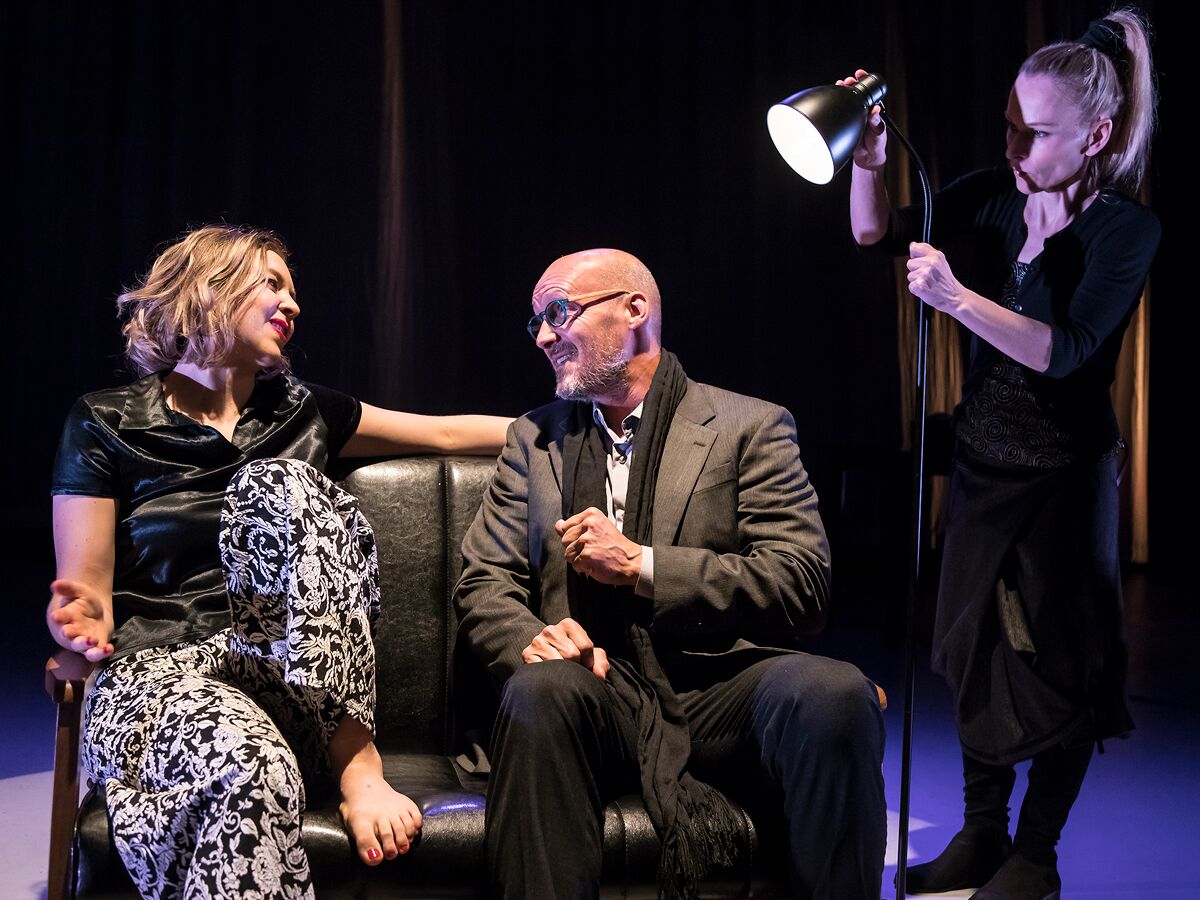
Lit Moon Theater Company has certainly given its actors plenty to do this season. All six of the players in the company’s production of A Doll House — Paige Tautz, Matthew Tavianini, Victoria Finlayson, Stanley Hoffman, Brian Harwell, and Nina Sallinen – are also in Julius Caesar, which ran on alternate nights during this recent engagement, and, on Saturday, September 1, occupied the matinee slot with A Doll House playing in the evening. Going from Shakespeare to Ibsen in a single day is a remarkable feat, and doing so this well is nothing short of heroic; the cast deserves wide recognition for their extreme dedication to this challenging work.
Now in its 26th year of operation, Lit Moon embodies an approach and an aesthetic that is at once homegrown and international, DIY and strikingly postmodern. Cultivated over decades of practice both here in Santa Barbara and at festivals and state theaters across Europe and Asia, director John Blondell’s joyous and freewheeling visual style encompasses many moods and tempos, from tiny sounds and gestures at the edges of perception to frenetic crescendos of wild movement and hoarse cries that go beyond language. If you are worried that such theatrical virtuosity might occlude the storylines of these classic plays, fear not. A Doll House offers a prime example of Lit Moon’s ability to navigate between the poles of an overly predictable fidelity and absolute freedom. As has been true with some of Blondell’s other interpretations of modern classics, like The Glass Menagerie, which the company is bringing back at the end of November to the Community Arts Workshop, there’s ample room for disagreement, but at the core what we have here is a fascinating and sharply defined performance of one of the world’s greatest dramas.
As Nora Helmer, Paige Tautz revels in the coquettish perversity of Ibsen’s character, at least until the delicate balance of power between dominant and submissive tears apart. Some of the business invented to flesh out the words, such as a naughty game played with trousers and bank notes, may come across as anachronistic, but by the time that Nora performs her tarantella in the play’s second half, considerations of historical time and place are dwarfed by the enormity of her desperation. Matthew Tavianini plays Torvald as something more than the unctuous product of a hypocritical patriarchy, although he’s certainly that too. As Krogstad, the scheming usurer whose unmet needs haunt the Helmer’s house, Brian Harwell rides his emotions like waves, and uses those feelings of self-righteousness and self-pity to torque up his antagonists, especially Nora. Victoria Finlayson and Stanley Hoffman deliver subtle, nuanced turns as Mrs. Linde and Dr. Rank, fellow strugglers whose fates intertwine with those of the central couple.
At a time when theater bears a heightened responsibility for reflecting the complex and tragic impasses that plague our national culture, this revival of A Doll House sounds a welcome note that’s poised between hope and despair. As difficult as her decision is, Nora’s grand final refusal of the life she has been leading carries the weight of painful experience, and stands as a model of resistance.



